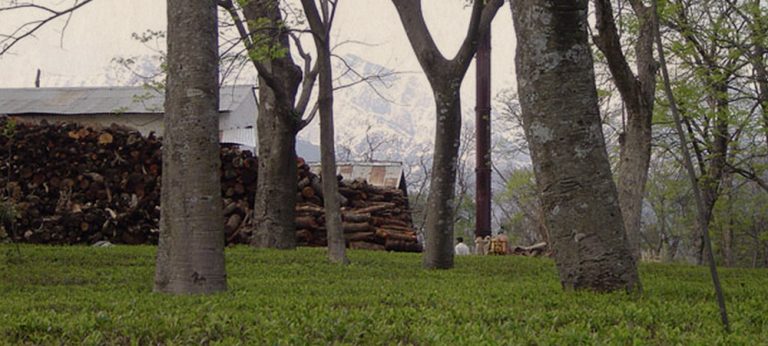Located in the north Indian state of Himachal Pradesh, the organic tea estates of Kangra have only recently caught the global limelight. Picturesque estates here boast rich loamy soil and aided by a cool climate and abundant rainfall, Kangra produces some of the most exquisite black and green teas.
Many tea connoisseurs will compare the Kangra tea to the Darjeeling tea, though the fact of the matter is that Kangra tea actually comes from the Hybrid China tea shrubs and has a distinct quality of its own!
The Kangra valley’s tea region is the smallest in the whole of India. The Dauladhar mountain range offers a backdrop to the valley, towering over it at about 5, 500 meters. What makes Kangra favourable for tea cultivation are these two factors:
- Tea plants require a specific temperature range during its cropping season. Between March and October, the main cropping season in Kangra, the temperature remains in the ideal range of 13-35 C.
- Kangra valley receives well-distributed rainfalls with an annual precipitation rate of 250-230 cm.
 The 1850s: Kangra Valley opens up for tea cultivation
The 1850s: Kangra Valley opens up for tea cultivation
Tea production started here in mid-19th century, in 1852, 12 years after the gardens in Darjeeling were planted. Dr Jameson, then Superintendent of the Botanical Tea Gardens, visited Kangra in 1849, found it suited for tea cultivation. He felt that the Dauladhar mountain ranges – especially the lower slopes – had the exact topographical requirements needed for this.
In 1852 tea cultivation was started commercially, with the first plantation estate established in Hotla in proximity to Palampur. This estate was situated at a height of about 1260 meters above from sea level. The tea plants that were grown in the estate were purely of the Chinese origin. By 1892, more than 9,000 acres of land were brought under tea farming and cultivation.
The tea produced here were considered very good. In 1883, the Gazetteer of the Kangra District noted that tea produced in the region was “probably superior to that produced in any other part of India”. In 1886 and 1895, Kangra tea won gold and silver medals for their superior quality, in London and Amsterdam respectively.
Kangra, however, suffered deep damage when an earthquake hit the region in 1905. Measuring 8 on the Richter scale, the devastation was enormous. Tens of thousands lost their lives and the surviving others lost their homes and land. Of the tea industry itself, there was nothing left. It’s British owners sold the gardens and went away.
The planters who remained struggled to revive Kangra’s lost glory. With production facilities for black tea badly disrupted, they turned to green tea production. Much of the tea produced here – handmade, orthodox green tea – was exported to Afghanistan and the Middle East, through Pathankot and Amritsar.
In the 1960s, the tea industry began to see some revival. By now, Kangra was no longer a part of Punjab but had been integrated into the state of Himachal Pradesh. The Himachal Pradesh government decided to support the struggling tea planters and the Kangra tea Industry. With its assistance, four cooperative tea processing factories were established at Palampur, Bir, Sidhbari and Baijnath, between 1964 and 1983. This was to help small tea growers who could not afford to set up their own factory. By 2004, only the Palampur factory remained functional because operational costs were economically unviable.
When it was felt that the future of Kangra tea was bleak and perhaps end up as a mere footnote in the history of tea, the Tea Board of India intervened. Small tea planters were effectively trained up and given adequate financial assistance while large scale planters were invited to Kangra and encouraged to invest here.
Today, there are around 6,000 tea gardens in Kangra. Nearly all of them produce the orthodox black tea. But estates like Mann Tea Estate of the Dharamsala Tea Company have expanded to produce limited quantities of exception handrolled oolong tea and silver needle white tea, while estates like Wah produce high quality green teas as well. In 2005, Kangra tea was accorded the GI status.
What to expect of the Kangra tea
Most Kangra teas boast a green, vegetal aroma that follows through in the taste, along with a subtle pungency that is quite understated and pleasant.
How the Kangra tea industry got back on its feet after nearly 100 years of dormancy by Frank Miller

Comments are closed.